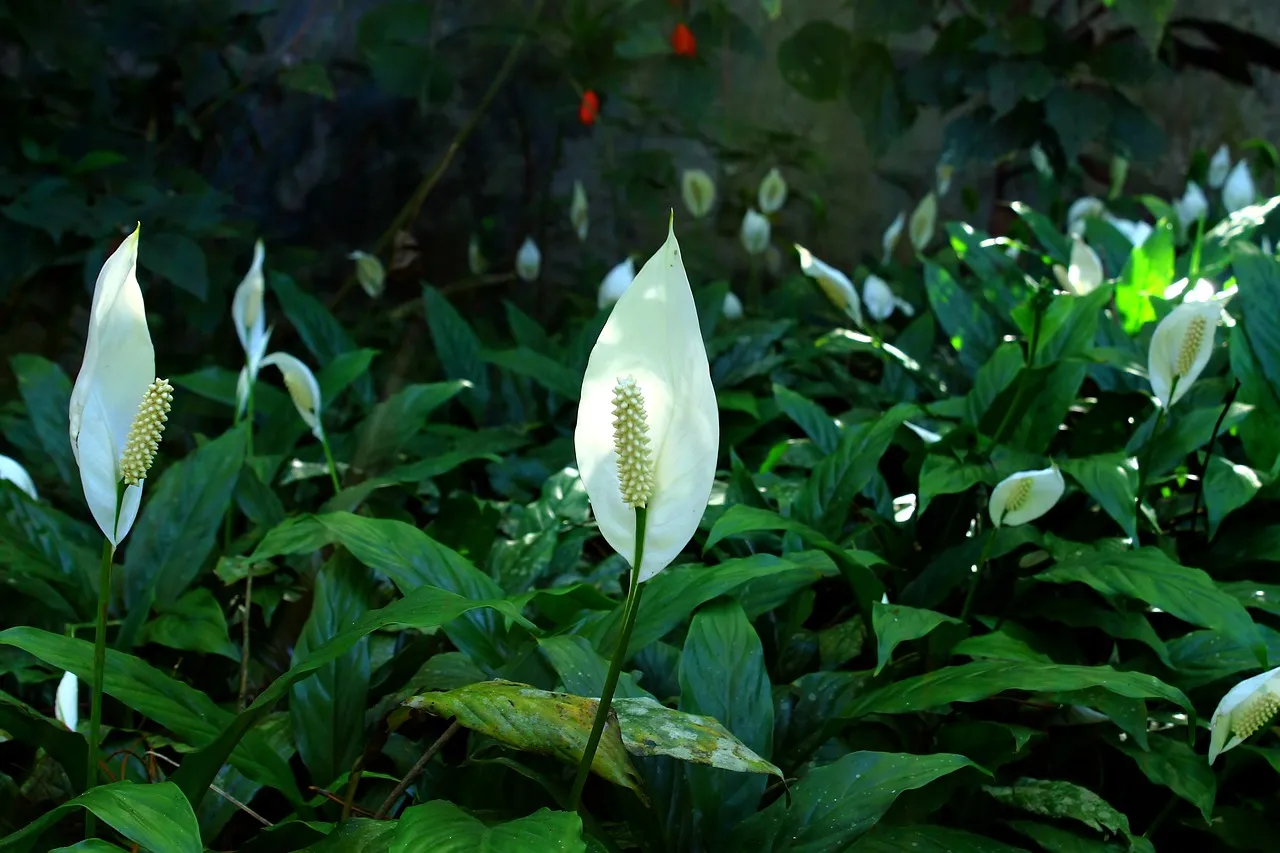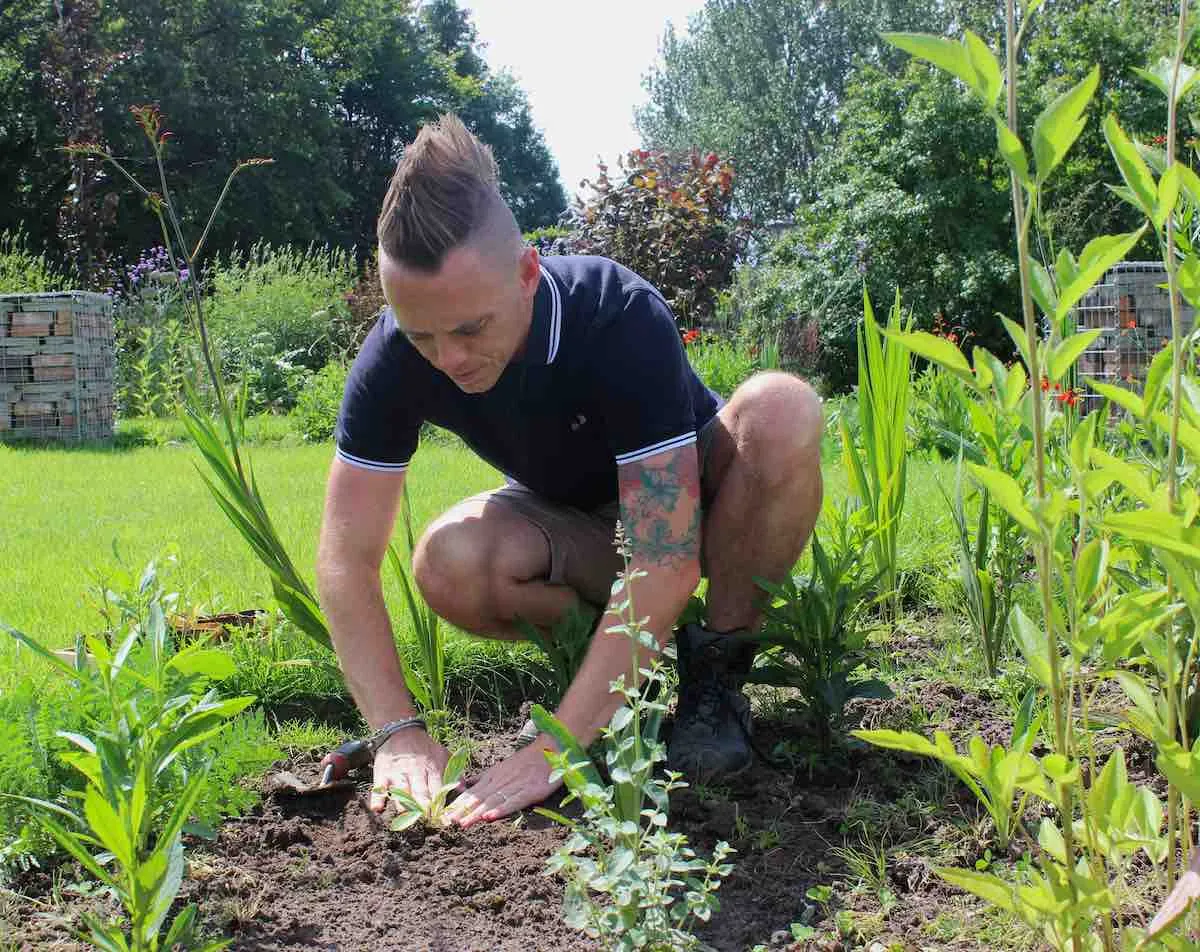-
Ask a Gardening Question Forum
 Lee Burkhill: Award Winning Designer & BBC 1's Garden Rescue Presenters Official Blog
Lee Burkhill: Award Winning Designer & BBC 1's Garden Rescue Presenters Official Blog

Welcome to the ultimate beginner gardening and garden design forum! Where no gardening question is too silly or obvious. This online gardening forum is run by Lee Burkhill, the Garden Ninja from BBC 1's Garden Rescue and a trusted group of experienced gardeners.
Whether you are a beginner or an expert gardener, it's a safe place to ask garden-related questions for garden design or planting. If you have a problem in your garden or need help, this is the Garden Forum for you!

Posting Rules: This space is open for all garden-related questions. Please be polite, courteous and respectful. If you wouldn't say it to your mum's face, then don't post it here. Please don't promote, sell, link spam or advertise here. Please don't ask for 'cheeky' full Garden redesigns here. They will be deleted.
If you need a garden design service, please use this page to book a design consultation. I will block anyone who breaks these rules or is discourteous to the Garden Ninja Community.
Join the forum below with your gardening questions!
Quote from eam.mt on 29th January 2024, 3:13 amHello.
So I recently bought a peace lily plant from Home Depot and it had seemed like it wasn’t very well taken care of, it had very dark dark droopy green leaves. Ever since then I’ve been trying to bring it back to life. Ive placed a humidifier by it, spritz it every now and then, placed it on top of a pebble tray, even added some water to the tray for it to soak up the water through there.
I’ve also re-planted it with better a better soil mix because the soil that was originally in there just seemed soggy and wasn’t draining well and the roots were coming through the drainage holes as well. I also try to make sure it gets the correct amount of bright, indirect light. The leaves have started to turn the green they’re supposed to be, other leaves are drying up and just damaged so I’ve cut those off. It seems to be growing good as well, new little leaves and flowers are growing. But they are still I guess a dark green/ black color and I noticed one of the new baby leaves has a small black tip.
Am I doing something wrong? I don’t know what else to do!
I’m also new to this whole thing of owning and taking care of a plant. I do want to grow a garden some day so I figured I should start off with a plant for now so I can learn. Below are the photos of what it looks like. (The “black” or very dark green parts of the leaves are what it completely looked like when I bought it, the brighter green parts of the leaves are starting to come out ever since it’s in been in my care.)
I don’t know if I should just be patient with it or what) only asking since I noticed the black tip on a brand new baby leaf, so maybe I am doing something wrong? I’ve had it for about 2 weeks now.
One more thing I forgot to mention is I do make sure not to completely over water it as well as using distilled water.
Hello.
So I recently bought a peace lily plant from Home Depot and it had seemed like it wasn’t very well taken care of, it had very dark dark droopy green leaves. Ever since then I’ve been trying to bring it back to life. Ive placed a humidifier by it, spritz it every now and then, placed it on top of a pebble tray, even added some water to the tray for it to soak up the water through there.
I’ve also re-planted it with better a better soil mix because the soil that was originally in there just seemed soggy and wasn’t draining well and the roots were coming through the drainage holes as well. I also try to make sure it gets the correct amount of bright, indirect light. The leaves have started to turn the green they’re supposed to be, other leaves are drying up and just damaged so I’ve cut those off. It seems to be growing good as well, new little leaves and flowers are growing. But they are still I guess a dark green/ black color and I noticed one of the new baby leaves has a small black tip.
Am I doing something wrong? I don’t know what else to do!
I’m also new to this whole thing of owning and taking care of a plant. I do want to grow a garden some day so I figured I should start off with a plant for now so I can learn. Below are the photos of what it looks like. (The “black” or very dark green parts of the leaves are what it completely looked like when I bought it, the brighter green parts of the leaves are starting to come out ever since it’s in been in my care.)
I don’t know if I should just be patient with it or what) only asking since I noticed the black tip on a brand new baby leaf, so maybe I am doing something wrong? I’ve had it for about 2 weeks now.
One more thing I forgot to mention is I do make sure not to completely over water it as well as using distilled water.
Uploaded files:Quote from Lee Garden Ninja on 29th January 2024, 12:55 pmHi @eam-mt
Thanks for your question about your Peace Lillies (Spathiphyllum wallisii) leaves turning black.
The main reason why Peace Lillies turn black is over-watering. I know that you said you are not watering it too much but given you've only had it around two weeks its more than likely had too much care and attention!
I know it may sound bonkers, but nearly all house plants thrive when care and watering is given in frequently. Misting, feeding, repotting and moving plants around too much all cause distress to them and can cause black, yellow or crispy leaves.
My advice would be that repotting it and misting it has led to it being flooded with moisture. I would leave the Lily as it is and only water it once a week, and lay off the misting for now as well until it settles. It won't need any feed for a good month or two if you've repotted it too, so less of that too!
Cut off any completely black leaves right down to the base.
Understanding where Peace Lillies grow in the wild can help you work out what growing conditions they like.
Where do Peace Lillies come from?
Peace lilies (Spathiphyllum) are native to the tropical regions of the Americas, primarily found in Central and South America, as well as in the Caribbean. They are native to areas such as Colombia, Venezuela, and southeastern Brazil, where they grow in the understory of tropical rainforests.
In their natural habitat, peace lilies thrive in the dappled shade of tall trees, where they receive filtered sunlight and high humidity levels. They have been cultivated and introduced to many other regions around the world as popular ornamental houseplants due to their attractive foliage and elegant white flowers. By mimicking these conditions in the home you can happily keep Peace lillies as houseplants.
Below is also some more general advice on how to keep Peace Lily house plants to assist other Garden Ninja members!
How to look after Peace Lillies Properly
1.Light Levels
- Peace lilies prefer bright, indirect light. Avoid placing them in direct sunlight, as this can scorch their leaves. Opache windows (those with films or diffusers on them) or bathrooms are ideal to place Peace Lillies.
- They can tolerate lower light conditions but may not flower as profusely.
2. Watering Peace Lillies
- Avoid keeping the Peace Lily too wet. Whilst many guides claim they need to be moist all the time this isn't true.
- Water the plant once a week, no more.
- Avoid letting the plant sit in standing water, as this can lead to root rot and other issues.
3. Humidity
- Peace lilies thrive in high-humidity environments. Increase humidity levels by placing the plant on a pebble tray filled with water or using a humidifier. Alternatively, simply house them in bathrooms and high-humidity rooms of your house, like conservatories.
- Misting the leaves with water can help maintain humidity levels and prevent leaf browning, but it is not essential in most cases.
4. Temperature
- Maintain temperatures between 65°F and 80°F (18°C to 27°C). Peace lilies are sensitive to cold drafts and temperature extremes. So don;t place near doors or draughty windows.
- Protect them from cold air conditioning drafts or heating vents like radiators.
5. Fertilizing Peace Lillies
- Feed peace lilies with a balanced, water-soluble fertilizer diluted to half strength once a month during the growing season (spring and summer).
- Reduce fertilization to zero during the winter months when the plant's growth slows down.
https://youtu.be/5BhGtCjT2TQ
6. Pruning
- Remove dead or yellowing leaves with secateurs promptly to maintain the plant's appearance and prevent the spread of disease.
- Trim spent flowers to encourage new blooms and prevent the plant from diverting energy into seed production.
7. Repotting
- Repot peace lilies every 1-2 years or when they become root-bound. Choose a pot that is one size larger than the current container.
- Use a well-draining potting mix rich in organic matter that is a peat-free mix.
8. Pests and Diseases of Peace Lillies
- Monitor the plant regularly for signs of pests such as spider mites, fungus gnats, aphids, and mealybugs. Treat infestations promptly with insecticidal soap or neem oil.
- Watch for signs of root rot, which can occur due to overwatering or poor drainage. Adjust watering practices and ensure proper soil drainage.
9. Blooming
- Peace lilies typically bloom in spring and continue to flower intermittently throughout the year.
- Provide adequate light and proper care to encourage blooming.
I hope that helps and let us know how you get on!
Happy Gardening
Lee Garden Ninja
Hi @eam-mt
Thanks for your question about your Peace Lillies (Spathiphyllum wallisii) leaves turning black.
The main reason why Peace Lillies turn black is over-watering. I know that you said you are not watering it too much but given you've only had it around two weeks its more than likely had too much care and attention!
I know it may sound bonkers, but nearly all house plants thrive when care and watering is given in frequently. Misting, feeding, repotting and moving plants around too much all cause distress to them and can cause black, yellow or crispy leaves.

My advice would be that repotting it and misting it has led to it being flooded with moisture. I would leave the Lily as it is and only water it once a week, and lay off the misting for now as well until it settles. It won't need any feed for a good month or two if you've repotted it too, so less of that too!
Cut off any completely black leaves right down to the base.
Understanding where Peace Lillies grow in the wild can help you work out what growing conditions they like.
Where do Peace Lillies come from?
Peace lilies (Spathiphyllum) are native to the tropical regions of the Americas, primarily found in Central and South America, as well as in the Caribbean. They are native to areas such as Colombia, Venezuela, and southeastern Brazil, where they grow in the understory of tropical rainforests.
In their natural habitat, peace lilies thrive in the dappled shade of tall trees, where they receive filtered sunlight and high humidity levels. They have been cultivated and introduced to many other regions around the world as popular ornamental houseplants due to their attractive foliage and elegant white flowers. By mimicking these conditions in the home you can happily keep Peace lillies as houseplants.
Below is also some more general advice on how to keep Peace Lily house plants to assist other Garden Ninja members!
How to look after Peace Lillies Properly
1.Light Levels
2. Watering Peace Lillies
3. Humidity
4. Temperature
5. Fertilizing Peace Lillies
6. Pruning
7. Repotting
8. Pests and Diseases of Peace Lillies
9. Blooming
I hope that helps and let us know how you get on!
Happy Gardening
Lee Garden Ninja
Quote from PlantoraApp on 11th March 2024, 6:44 amI'm sorry to hear that your peace lily is experiencing issues! Blackening of peace lily leaves can be a sign of various problems, but the most common causes include over-watering, under-watering, poor drainage, low humidity, or exposure to direct sunlight. Here's what you can do to address the issue:
Check the soil moisture: Stick your finger about an inch into the soil. If it feels dry, it's time to water your peace lily. If it feels moist, hold off on watering for a few more days.
Watering: Ensure that you're watering your peace lily properly. Peace lilies prefer consistently moist soil, but they don't like to sit in water. Make sure the pot has good drainage.
Lighting: Peace lilies prefer bright, indirect light. Direct sunlight can scorch the leaves, leading to blackening. Move your plant to a location with bright, filtered light.
Humidity: Peace lilies thrive in high humidity environments. If your home is particularly dry, consider misting the leaves occasionally or placing a tray of water near the plant to increase humidity.
Repotting: If the peace lily is rootbound or if the soil is depleted, it may need repotting. Choose a pot that's slightly larger than the current one and use a well-draining potting mix.
Pruning: Trim away any blackened or damaged leaves with clean scissors or pruning shears. This will help the plant direct its energy towards healthier growth.
Pests and Diseases: Check the plant carefully for any signs of pests like aphids, spider mites, or diseases like root rot. Treat accordingly if you find any issues.
By addressing these factors, you should be able to help your peace lily recover. If the problem persists despite your efforts, you may download best plant care app- PLANTORA for further advice.
I'm sorry to hear that your peace lily is experiencing issues! Blackening of peace lily leaves can be a sign of various problems, but the most common causes include over-watering, under-watering, poor drainage, low humidity, or exposure to direct sunlight. Here's what you can do to address the issue:
Check the soil moisture: Stick your finger about an inch into the soil. If it feels dry, it's time to water your peace lily. If it feels moist, hold off on watering for a few more days.
Watering: Ensure that you're watering your peace lily properly. Peace lilies prefer consistently moist soil, but they don't like to sit in water. Make sure the pot has good drainage.
Lighting: Peace lilies prefer bright, indirect light. Direct sunlight can scorch the leaves, leading to blackening. Move your plant to a location with bright, filtered light.
Humidity: Peace lilies thrive in high humidity environments. If your home is particularly dry, consider misting the leaves occasionally or placing a tray of water near the plant to increase humidity.
Repotting: If the peace lily is rootbound or if the soil is depleted, it may need repotting. Choose a pot that's slightly larger than the current one and use a well-draining potting mix.
Pruning: Trim away any blackened or damaged leaves with clean scissors or pruning shears. This will help the plant direct its energy towards healthier growth.
Pests and Diseases: Check the plant carefully for any signs of pests like aphids, spider mites, or diseases like root rot. Treat accordingly if you find any issues.
By addressing these factors, you should be able to help your peace lily recover. If the problem persists despite your efforts, you may download best plant care app- PLANTORA for further advice.


Vuelo Top 10 Garden Blogger Award 2019
Chelsea Flower Show Director Generals Trade Stand Award 2018
5 Star Trade Stand Hampton Court 2018
Garden Media Guild New Talent 2017 Finalist
RHS & BBC Feel Good Gardens Winner 2016
 To my YouTube channel
To my YouTube channel 
JOIN THE NINJAS
Join our Ninja community for your Exclusive Discounts
JOIN THE NINJAS

Be the first in line for new Guides, Discount codes and Offers